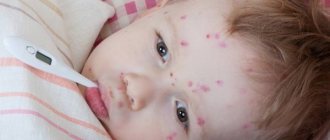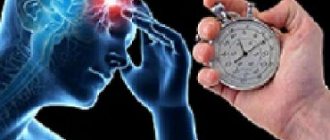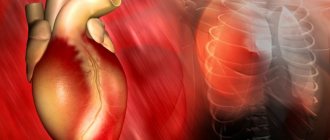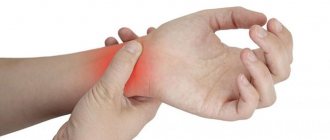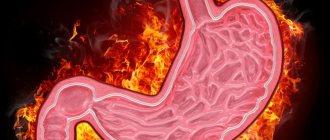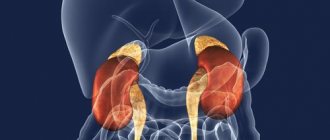Hemorrhagic stroke is an acute cerebrovascular accident (CVA), a type of cerebrovascular insufficiency.
Unlike its ischemic “brother,” the pathological process is more dangerous in nature, its mortality rate is several times higher.
Why is this and what is the difference? It's all about the mechanism and essence of the deviation.
Against the background of a classic cerebrovascular accident, tissue begins to die as a result of a decline in the quality of trophism at the local level. In a specific location. The vessels remain intact.
With a hemorrhagic stroke, an artery ruptures and abundant blood flows into the brain space. Accordingly, all nervous tissue suffers at once. The risk of dangerous complications is higher; death occurs approximately three times more often if we talk about classical ischemia.
The symptoms are typical. Heavy. Diagnosis is not very difficult. Treatment is urgent and conservative. Resuscitation is often required.
What is a hemorrhagic stroke?
Hemorrhagic stroke is an acute hemorrhage in brain tissue as a result of increased vascular permeability or rupture. This pathology differs in its development mechanism from the ischemic form of the disease, which is observed in 70% of patients. The disease is characterized by the following features:
- Suddenness. In most patients, hemorrhagic stroke develops without previous clinical signs.
- High mortality rate. About 60-65% of patients die within the first 7 days after the onset of pathological processes.
- High level of disability among surviving patients. More than 70% of people who have suffered a hemorrhagic stroke are bedridden and cannot care for themselves, the remaining 30% have severe neurological deficits. They have impairments in the functioning of their limbs, speech, vision, intelligence and other functions.
Useful information
More than 80% of hemorrhages in brain structures are associated with arterial hypertension. Taking antihypertensive drugs reduces the risk of hemorrhagic stroke, as well as the volume of hemorrhage and the severity of the lesion.
If a patient is hospitalized within the first 3 hours after the onset of the disease, the chances of survival increase significantly. Treatment in specialized medical institutions contributes to the maximum restoration of lost functions.
Classification
Depending on the origin, doctors distinguish between primary and secondary forms of the disease. Primary hemorrhagic stroke develops as a result of a hypertensive crisis or thinning of the walls of blood vessels in the brain, which are provoked by physical and emotional overload. The secondary type of the disease occurs as a result of rupture of an aneurysm or other vascular deformations, as well as anomalies that are congenital or acquired.
Depending on the localization of pathological processes, the following types of hemorrhages are distinguished:
- Subarachnoid. This is an accumulation of blood in the space under the arachnoid membrane of the brain.
- Hemorrhage to the periphery or depth of brain structures.
- Ventricular. It is localized in the area of the lateral ventricles.
- Combined. This type of pathology is observed in massive hemorrhagic strokes affecting several areas in the brain.
Peripheral hemorrhages are less dangerous than intracerebral hemorrhages, which are accompanied by the formation of edema and hematomas with subsequent necrosis of brain tissue. Depending on the localization of pathogenic processes in the structures of the brain, the following are distinguished:
- Lobar hematomas. They are localized within the border of one cerebral lobe and do not extend beyond the cortex.
- Lateral hematomas. They are characterized by damage to the subcortical nuclei, which are located in the white matter of the hemispheres.
- Medial hematomas. If they are present, the thalamus is damaged.
- Mixed type of hemorrhage. These are hematomas affecting several parts of the brain.
Classification
Typing is carried out according to two generally accepted criteria. The first concerns the actual localization of the pathological process.
- Hemorrhagic hemispheric stroke. The superficial parts of the cerebral structures on the right or left side are affected. This does not negate the severity of the process, quite the opposite. Compression of several lobes occurs at once with the development of combined focal symptoms, which can put the life or health of the patient, his ability to work, learn, and generally exist at risk.
- Subcortical. It develops on one side, but affects deep-lying structures. Considered just as dangerous. With a small volume of blood output, the likelihood of death is lower, and the neurological deficit is limited to one focus.
- Stem. The deepest form of hemorrhagic stroke of the brain. It is considered the most dangerous variety, since already in the early stages of development life- and health-threatening symptoms arise, such as cardiac arrest, respiratory arrest, temperature instability without the influence of the pyrogenic factor.
Patients need constant monitoring and transportation to intensive care. Careful monitoring is required throughout the acute period and even rehabilitation.
- Cerebellar form. Affects the extrapyramidal system, in particular the described cerebral appendage. It is accompanied by characteristic symptoms, such as pseudoparkinsonism, dizziness, unsteadiness of gait, impaired compensation of unnecessary movements, and others.
There is another way to classify the pathological process. It concerns the exact location of the lesion.
- Subarachnoid hemorrhage. Occurs in 20-25% of cases. Blood accumulates between the membranes of the brain.
- Epidural hematoma. Liquid connective tissue is found between the outer shell of the organ and the deeper structures. It is considered the most superficial variety.
- Ventricular hemorrhage. Ventricular damage.
There is a classification according to the severity of the emergency condition. It is most often used by emergency doctors; it is also common in hospital practice. From 1 to 4 phases. From minor neurological deficits to deep coma and impaired reflexes.
In the first and third cases, the symptoms are severe and painful for the patient. A special liquid, cerebrospinal fluid, actively circulates in these areas.
During a stroke, the drainage system disrupts its activity, and the outflow from the ventricles worsens. Which leads to an increase in intracranial pressure.
If measures are not taken, in addition to the unbearable headache and typical clinical symptoms, threatening complications will also develop. The classic consequence is cerebral edema.
Next, the tonsils and its trunk become wedged into the foramen magnum and the patient dies.
The classification of hemorrhagic stroke is used for urgent diagnosis within the framework of minimal measures, accurate assessment of the patient’s condition, development of therapeutic tactics and provision of primary hospital care.
Causes and risk factors
In 75% of cases, the etiological factor in the development of the disease is arterial hypertension. In addition, the causes of hemorrhagic stroke include the presence of:
- cerebral aneurysm;
- processes of malformation in arteries and veins;
- vasculitis;
- hemorrhagic diathesis;
- amyloid angiopathy;
- systemic connective tissue diseases;
- taking fibrinolytic drugs or anticoagulants;
- malignant neoplasms;
- encephalitis;
- carotid-cavernous fistulas;
- hemorrhages in the pituitary gland;
- idiopathic hemorrhages in the subarachnoid space.
Among the factors that contribute to an increased risk of developing hemorrhagic stroke are:
- obesity;
- eating fatty and fried foods;
- smoking;
- taking alcohol or drugs;
- old age;
- heat or sunstroke;
- traumatic brain injuries;
- constant stress;
- diabetes;
- genetic predisposition;
- intoxication of the body.
| Risk factors | Increased likelihood of developing hemorrhagic stroke, % |
| Arterial hypertension | 20-25 |
| Obesity | 15-20 |
| High cholesterol | 12-15 |
| Low white blood cell count | 12-15 |
| Unbalanced diet | 10-12 |
| Bad habits | 4-6 |
| Concomitant pathologies | 3-5 |
| Genetic predisposition | 3-5 |
Mortality during the first month from the onset of the disease is 70-80%. Survival rates are significantly lower than for cerebral infarction. During the first year, about 85% of patients die, and more than half of those who survive become disabled.
Causes
Under the influence of unfavorable factors, the walls of blood vessels weaken, become thin and fragile, and their permeability increases. The condition of the arteries depends on the diseases suffered and the age category of the person. The most common provocateur of hemorrhage is a hypertensive crisis.
Causes of hemorrhagic stroke:
- high blood pressure;
- heart diseases;
- vascular pathologies;
- aneurysms, vascular malformations;
- diabetes;
- cerebral vasculitis;
- amyloid angiopathy;
- excess weight, sedentary lifestyle;
- bad habits;
- abuse of blood thinners;
- stress and nervous shock.
Symptoms and first signs
The duration of the pre-stroke condition can vary from several hours to days. Based on some signs, you can detect the development of pathogenic processes and seek help from doctors, which will prevent serious complications. Warning signs of stroke caused by cerebral hemorrhage include:
- headaches, dizziness;
- nausea, vomiting;
- impaired sensitivity of the limbs;
- general weakness;
- fast fatiguability;
- facial skin hyperemia;
- changes in heart rate.
If there are several signs that precede a hemorrhagic stroke, you need to seek help from a medical facility. If these symptoms are detected in a loved one, there is a standard test that can determine the onset of an attack:
- crooked smile;
- turning the tongue to the side;
- inability to lift the upper limbs and keep them in one position;
- incoherent speech.
Hemorrhagic stroke is characterized by suddenness. All symptoms are getting worse every minute. A sharp headache, which is accompanied by loss of consciousness, indicates rapid hemorrhage, since with the ischemic variant of the disease, pathological processes proceed more slowly. Symptoms of the disease also include:
- impaired coordination of movements;
- hearing loss;
- lack of focus;
- heart failure;
- intermittent breathing;
- loss of sensitivity in the facial muscles;
- paralysis;
- coma.
It is important to know what a hemorrhagic stroke is and what its symptoms are. If you detect any signs of the disease, you should immediately seek help from specialists. This will prevent the development of serious complications and preserve basic brain functions.
Conditions for successful rehabilitation
After hemorrhage, various consequences arise that affect the vital functions of the body. These include impaired speech function, coordination of movements, loss of vision, paralysis of the left or right side of the body and many other symptoms.
It takes a lot of time, effort and patience to recover. Rehabilitation usually takes several years. To speed up the recovery period, it is necessary to create good conditions.
ATTENTION!!!
The most important condition for successful rehabilitation is the patient’s attitude towards recovery. Under no circumstances should we lose hope of returning to normal life. The depressed state of patients usually nullifies all the efforts of doctors and relatives.
In order to prevent the patient from becoming depressed, it is necessary to create a favorable psycho-emotional climate in the home. No matter how difficult it may be for your family, you should never show fatigue, irritability, worries or other negative emotions.
On the contrary, it is necessary to convince the patient that he is important to his family and his relatives will always be able to help him cope with all difficulties. The patient needs to be constantly encouraged, communicate with him more often, walk in the fresh air, and carry out all the necessary rehabilitation measures with him.
Another important point for a successful recovery is to undergo all procedures that are needed after a stroke. There are events that are carried out free of charge under the policy, and there are additional paid services. The latter should not be neglected if they are recommended by the attending physician.
The patient regularly needs to engage in physical therapy, attend classes with a speech therapist, psychologist, and attend physiotherapy sessions. It is also important to feed the patient properly. Stroke patients are required to follow a diet, the slightest deviation from which can trigger the re-development of brain disease. Traditional methods are also often used to help enhance the effectiveness of the main therapy.
At home, it can be quite difficult to comply with all the necessary requirements. Therefore, staying in sanatorium-resort institutions is considered an ideal option for treating the consequences. There are many similar organizations, one of the areas of which is the recovery of patients after a stroke. They have already created all the conditions for successful rehabilitation. Moreover, it is much easier for a person to cope with the disease together with the same patients.
Diagnostics
Examination data and the presence of certain clinical symptoms allow one to suspect the disease. To confirm the diagnosis, it is necessary to carry out a number of diagnostic procedures, since this affects further treatment tactics. The most effective research methods for hemorrhagic stroke are:
- Lumbar puncture. It involves puncturing the spinal canal using a thin needle. The processes of circulation of brain fluid take place in it. The diagnosis is made based on the presence of a large number of red blood cells, which gives the cerebrospinal fluid a pink color.
- Angiography of cerebral vessels. This procedure is accompanied by the introduction of contrast agents into the cerebral arteries with further recording of the vascular pattern on electronic media or x-ray film. This makes it possible to detect a ruptured vessel, which resulted in a hemorrhagic stroke. Also, using angiography, you can determine the presence of vascular abnormalities and treat them before the walls rupture.
- Computed and magnetic resonance imaging. These methods are performed to quickly and reliably confirm the diagnosis. With their help, you can determine the presence of a hemorrhagic stroke, the size of the pathological foci, their localization, as well as their location relative to the ventricular system.
Features of subarachnoid hemorrhage
This type of hemorrhagic stroke most often occurs in young people. The reasons for this are that subarachnoid hemorrhage develops mainly due to vascular aneurysm. Rupture of such an affected vessel can occur suddenly under the influence of a traumatic brain injury, a sharp increase in blood pressure, or severe physical or psycho-emotional stress.
This type of stroke always develops sharply and suddenly, usually in completely healthy people. Precursors very rarely appear before the hemorrhage itself; usually, a severe, sharp headache immediately appears, like a blow to the back of the head with a dagger. Severe nausea, vomiting, and convulsions may occur. Rigidity of the neck muscles and increased sensitivity of all sense organs are often observed. Psychomotor agitation also develops. With this type of stroke, the hemorrhage does not affect brain tissue, so neurological symptoms do not develop. But in this case, serious consequences often arise in the form of a delay in the outflow of cerebrospinal fluid and its accumulation in the meninges. This threatens the development of hydrocephalus or leptomeningitis. In addition, vasospasm or repeated hemorrhage often develops.
First aid for hemorrhagic stroke
First of all, if you have a hemorrhagic stroke, you need to call an ambulance team. After this, it is necessary to begin carrying out measures to provide first aid:
- Place the person on their back with their head elevated 30 degrees.
- Turn him onto his right side. This will avoid aspiration of stomach contents into the upper respiratory tract during vomiting.
- Loosen or remove constrictive clothing.
- Open the window to allow oxygen to enter.
- Monitor blood pressure and pulse levels.
If a hemorrhagic stroke is suspected, a person is hospitalized in a specialized hospital, an angioneurology department with an intensive care unit, or in an intensive care unit. Under these conditions, the victim is further examined and therapy is started.
Reasons for a favorable prognosis
Factors predisposing to a good outcome of hemorrhagic stroke:
- Young age
- Low body temperature
- Improvement in condition no more than a week after brain catastrophe
- One of the non-standard factors contributing to a more favorable outcome is the presence of a sick spouse
There are specialized centers for the treatment of strokes, and the outcome of treatment in such centers is significantly improved. Studies have shown that treatment in specialized centers reduces mortality by 3%. This is due to a targeted approach to the correction of indicators such as pressure and temperature.
The influence of post-stroke depression on prognosis has also been proven. In patients suffering from depression, the recovery process is longer and less effective.
Treatment
After first aid is provided, the patient is taken to a medical facility. With a hemorrhagic stroke, the chances of survival depend on the extent of the hemorrhage, its location, the degree of damage to brain structures and timely treatment. During therapy, the patient is prescribed drugs that reduce pressure, restore lost functions, as well as droppers to stabilize the functioning of all organs and systems.
In case of respiratory failure, the patient is connected to a ventilator. If there are positive dynamics during the treatment of hemorrhagic stroke, doctors carry out further restorative drug therapy aimed at restoring brain function. After inpatient treatment, the patient needs long-term rehabilitation in order to eliminate the consequences of the disease.
In case of massive hemorrhages, surgical interventions are performed. Their goal is to eliminate the hematoma, stop bleeding and prevent the development of cerebral edema.
Drug treatment
Prescribing medications for hemorrhagic stroke has several goals. Among them are:
- Normalization of blood pressure levels. If its indicators decrease, Captopril, Enalapril, Lisinopril are prescribed. In case of increase, Dibazol and Benzohexonium are administered intramuscularly or intravenously. If the patient has preserved swallowing function, then the use of Nifedipine and Metoprolol is recommended.
- Reducing cerebral edema. For this purpose, Furosemide, Dexamethasone, and Manit are used.
- Stop bleeding. For this, Dicinon, Vikasol and Etamzilat are prescribed.
- Maintaining nutrition of brain cells. Effective remedies in this case are Actovegin, Thiocetam, Cavinton, Ceraxon.
- Stabilization of the microvasculature. For hemorrhagic stroke, Cytoflavin and Reosorbilact are used.
Operation
In some cases, patients with hemorrhagic stroke are prescribed surgery aimed at eliminating the hematoma, stopping bleeding and preventing the development of cerebral edema. The main procedures for treating this disease include:
- Puncture interventions. They are carried out by puncturing the skull under the control of special devices. Using a thin needle, blood is removed from the site of the ruptured vessel. This technique is most effective for hemorrhagic strokes in the deep parts of the brain.
- Trephination operations. Their implementation involves removing a bone fragment above the pathological focus area. Using a specially formed channel, accumulated blood is removed from the patient’s skull. In addition, among the advantages of the technique are a decrease in intracranial pressure and cerebral edema. Manipulation is indicated for superficial hemorrhages.
- Drainage procedures. To carry out these interventions, tubular drainages are installed in the ventricles of the brain. They ensure the outflow of cerebrospinal fluid with blood, and also reduce pressure inside the skull, which helps restore brain function.
The latest trends in the treatment of hemorrhagic stroke
The development of modern medicine in some cases makes it possible to refuse serious surgical interventions and opt for minimally invasive operations. They are highly effective and have a low likelihood of complications.
In addition, in developed countries, the main efforts are directed towards rehabilitation medicine. Restoring lost functions and preventing recurrent cases of the disease today is the main task of the doctor. For this purpose, medications, physiotherapeutic procedures, and adjustments to the patient’s diet and lifestyle are used.
Types of intracranial hemorrhages
Depending on the location of the vessel from which the blood leaked, this type of stroke is divided into:
- parenchymal hemorrhage, characterized by the formation of a hematoma inside the brain or hemorrhagic impregnation of the nervous tissue;
- subarachnoid, which occurs when blood accumulates between the arachnoid and pia mater of the brain.
With parenchymal hemorrhage, depending on the caliber and location of the vessel, blood may break through into the ventricles of the brain. Such strokes are often characterized by an extremely severe course and loss of a relatively large amount of blood.
Rehabilitation after hemorrhagic stroke
The return of the patient’s lost functions and performance is achieved through further medical prescriptions from the doctor. They are aimed at restoring speech and motor functions, as well as sensitivity. In addition, such patients need the help of psychologists and loved ones. During the rehabilitation of victims with hemorrhagic stroke, the following techniques are used:
- physiotherapy;
- training on simulators;
- massage;
- hydrotherapy;
- working with a speech therapist.
During the rehabilitation period, prevention of the development of possible complications is carried out, including heart failure, congestive pneumonia, deep vein thrombosis of the extremities. These conditions can cause pulmonary embolism. To prevent this, angioprotectors, phlebotonics, immunostimulants, as well as therapeutic exercises are prescribed. To prevent bedsores, skin hygiene is used using camphor alcohol at the site of compression.
The diet of patients with hemorrhagic stroke should exclude salty, spicy, fried and fatty foods. It should also be free of confectionery, rice, potatoes and animal fats. Foods high in fiber, vitamins and polyunsaturated fats are healthy:
- vegetables;
- fruits;
- fresh herbs;
- seafood;
- vegetable oil.
When rehabilitating a patient, doctors recommend using traditional medicine that improves cerebral blood flow, normalizes blood pressure and helps restore motor functions. Among the most effective recipes are:
- Peony root. The plant is crushed, poured with a glass of boiling water and infused for an hour. You need to take the product 30 ml 3 times a day.
- Pine baths. They help restore motor activity in the affected parts of the body.
- A mixture of vegetable oil and medical alcohol. It is rubbed into paralyzed areas to restore sensitivity.
The recovery period after a hemorrhagic stroke is very long. It requires a lot of patience from the patient and the people involved. Rehabilitation of the patient may take many years, and returning to normal daily life is not always possible.
The whole truth about hemorrhagic cerebral stroke: why it is dangerous and how to treat it
Stroke is a sudden and rapidly developing vascular accident of the brain.
It can be ischemic and hemorrhagic. Differences in the mechanism of occurrence explain the development of the disease and prognosis.
Forms of the disease
An ischemic stroke occurs as a result of blockage of a vessel and, as a result, a significant deterioration or complete cessation of blood supply to a certain area of the brain occurs. It develops gradually, if noticed in time, it can be cured with minimal losses and residual effects.
Hemorrhagic stroke of the brain is the result of damage to the vessel wall and hemorrhage. It develops rapidly and has dire consequences, often even despite adequate treatment.
Survival Statistics
Cerebral ischemia occurs 5 times more often than hemorrhages. But the consequences are much more serious for a hemorrhagic attack.
Unlike cerebral vascular ischemia, not only older people are exposed to hemorrhagic strokes: with defects in the formation of blood vessels, hemorrhage can occur at any age . Men are more susceptible to this disease.
Stages of development
Like any disease, this one develops over time and qualitatively. It happens in stages:
- prodromal period: damage has already begun, fluid from the vessels begins to flow into the brain tissue;
- developed or demonstrative stroke - all symptoms indicating brain damage of varying degrees are clearly expressed;
- completed stroke: the hemorrhage is complete, tissue destruction does not spread to neighboring areas;
- rehabilitation: restoration of functions of damaged parts of the brain.
The form of hemorrhagic stroke directly depends on the area of the lesion.
Classification of species by lesion
Depending on the location of occurrence, hemorrhage occurs:
- intracerebral - when a vessel ruptures inside the brain body or in the trunk - most often occurs due to increased pressure in individual areas of the brain, can be localized (without blood flow into the cerebrospinal fluid) and limited in scope;
- subarachnoid – localized in the area of the circle of Willis between the meninges, occurs in 80% of all cases of hemorrhage;
Hemorrhages in this area are caused by the presence of non-functional hypoplastic vessels with multiple defects in the form of aneurysms. They burst under unfavorable circumstances.
- extensive - develops with reduced blood clotting or an incorrect diagnosis with the introduction of anticoagulants, or with multiple ruptures of blood vessels during a hypertensive crisis in various parts of the brain;
Consequences of damage to the right and left sides
Right hemisphere - in the case of hemorrhargia in this part of the brain, disturbances occur in the left half of the body and the functions of abstraction, synthesis and analysis of information are disabled, physical self-perception is disrupted (alienation of limbs, the feeling of multiple body parts), speech is practically not impaired, but memory suffers, ability to determine dimensions, mathematical abilities.
Left hemisphere - a pronounced speech disorder, reading and writing skills are lost, paralysis or paresis of the right half of the body occurs, the depressive component of the disease is more clearly expressed.
Causes and risk factors
In the vast majority of cases, there are two causes of hemorrhagic stroke:
Hypertonic disease . Provokes 80% of all cerebral hemorrhages. It can develop gradually: a systematic and prolonged increase in blood pressure gradually thins the walls of blood vessels, creates microcracks in them, through which fluid leaks, widening the holes.
After micro-effusions, the vessel may suddenly rupture over a significant area. Sometimes hemorrhage occurs simultaneously, without previous minor damage, usually during a hypertensive crisis.
Vascular malformation . Intrauterine or acquired abnormal structure of cerebral vessels with areas of expansion (aneurysm) or narrowing (stenosis).
The defect creates tension in various parts of the vessel, even with normal total arterial pressure, during mild physical activity, which leads to rupture of the aneurysm. Young and middle-aged men are more often affected.
The formation of these causes is facilitated by certain conditions of the body, such as:
- atherosclerosis – deposition of cholesterol plaques on the walls of the bloodstream, narrowing the lumen of the vessel and reducing its elasticity, and therefore the tendency to rupture;
- amyloid angiopathy - deposition of protein compounds on the walls of blood vessels, which has the same consequences as atherosclerosis, and also causes dementia and Alzheimer's disease;
- low blood clotting – hemophilia;
- encephalopathy (inflammation of parts of the brain) of various origins;
- diabetes mellitus – with a long course of the disease, vascular damage certainly occurs;
- brain tumors of various origins.
These conditions can be caused by certain provoking factors , the exclusion of which from lifestyle reduces the risk level:
- heavy consumption of fatty foods;
- sedentary lifestyle;
- disordered work and rest schedule;
- unhealthy habits: smoking, alcohol abuse, use of illegal drugs;
- head and spine injuries;
- constant nervous tension (stress);
- prolonged exposure to the sun during hot times of the day;
- hard physical work.
Symptoms and signs
Within a few hours (or even days), severe headaches , localized or generalized, not relieved by analgesics. This sign can be both a harbinger and an indicator of the development of pathology. Often the pain is accompanied by nausea and vomiting, which does not bring relief.
Stupefaction, fainting , including transient ones, indicate the development of a defect. An epileptiform seizure can be the starting point of a stroke.
Signs of brain dysfunction:
- weakening of the muscles of one half of the body or their paralysis;
- the appearance of asymmetry on the face - unequally directed corners of the lips;
- inability to speak clearly.
These last signs allow even non-specialists to predict the onset of an attack, which significantly reduces the waiting time for first aid.
Diagnostics
If a stroke is suspected, a number of tests can be performed (if the person is conscious and understands speech):
- evaluate the smile - during a stroke, one side of the oak is motionless, which is especially noticeable when smiling;
- hearing speech - slurring, not typical for a given individual, is a symptom characterizing a stroke;
- observe the conscious movements of the hands - non-synchronization of movements during directed action is a harbinger of the disease.
Confirming the diagnosis requires the use of modern electronic devices: the affected area is visible on a computed tomograph; at a later date, it is possible to confirm the diagnosis and develop treatment methods using MRI. Upon admission to the hospital and throughout the stay, the patient undergoes several tests.
Differential diagnosis is carried out with meningitis, the breakdown of blood vessels in the tumor.
Treatment
The most important prognostic factor determining the success of treatment is the timeliness of care . In practice, it has been established that a possible earlier placement in a specialized hospital increases the likelihood of minimal damage significantly.
Help: For help to be effective, it is necessary to start fighting a stroke within 3 hours from the moment the first signs appear. From 3 to 6 hours, the probability of a favorable outcome decreases literally minute by minute. And after 6 hours without help, the probability of recovery tends to zero. Therefore, the ambulance is called immediately.
Anti-stroke measures are organized in the ambulance:
- the patient is provided with a position with the head of the bed elevated;
- normalize blood pressure;
- support optimal cardiac and respiratory activity (oxygen, ventilation);
- stop bleeding from a damaged vessel - administer appropriate medications;
- reduce the amount of fluid in the body, in particular in the brain - diuretics are administered;
- reduce mental arousal, create a therapeutic neutral background;
- using medications to prevent the occurrence of convulsive reactions.
Upon delivery of the patient to the hospital, laboratory and instrumental studies are carried out, including analysis of the contents of the cerebrospinal fluid.
Based on the results of an emergency examination, the treatment path is chosen:
- The conservative therapeutic method consists of prescribing drugs that maintain the required level of vital activity, preventing the occurrence of complications - congestive pneumonia and bedsores.
- The surgical method is used for extensive hemorrhage close to the onset of the disease. Its essence is to pump out excess fluid, relieve pressure on brain tissue, and eliminate the source of infection - blood clots.
Find out more details about the disease from the video:
And this video shows an operation for hemorrhagic stroke: be careful, not for the faint of heart!
Rehabilitation and recovery after illness
The recovery period after a hemorrhagic stroke lasts several months and even years . How to recover after a hemorrhagic stroke? Physiotherapy, massage, therapeutic exercises, sedatives, and classes with a teacher are prescribed. Spa treatment is recommended.
With persistent, targeted and regular exercise aimed at restoring lost capabilities, results appear gradually. The best indicators are for those who received emergency help on time.
Stopping exercise even for a short time, lack of physical activity and new impressions that stimulate the brain, contribute to the cessation of progress and stop the dynamics of empowerment.
The nutrition of patients after a hemorrhagic stroke should be balanced and complete, but the diet should be split - 5-6 times a day with a limit on the content of fats and simple sugars.
The author of this video talks about the stages of rehabilitation and recovery after a hemorrhagic stroke at home and with the help of physiotherapy:
Recovery prognosis and chances of survival
The most unfavorable prognosis for life is with an extensive hemorrhagic stroke with hemorrhage in several parts of the brain. Over time, not all brain structures are restored.
With targeted rehabilitation work, the right and left hemisphere brain functions are partially, sometimes significantly, restored . But noticeable residual phenomena also persist. The prognosis for independent self-care worsens if first aid was not provided in a timely manner - the patient remains bedridden for many years.
Prevention of occurrence and relapses
To prevent a serious complication—recurrent hemorrhagic stroke— predisposing factors are excluded . Streamlining the regime of changing activities, switching to proper nutrition and a healthy lifestyle with the abandonment of bad habits and sufficient physical activity is an important component of prevention.
For rehabilitators and members of risk groups, it is very important to keep blood pressure under control . Long-term increases and short-term jumps should not be allowed. In the absence of organic lesions of the cerebral vessels, this is enough to avoid hemorrhage.
Thus, hemorrhagic stroke is a severe vascular disaster that does not pass without a trace even under the most favorable circumstances. Healthy aging without disability is the dream of many sensible people. Strengthening blood vessels is the right direction to achieve it.
Sources: https://headcure.ru/gemorragicheskij-insult/prognoz.html https://oserdce.com/sosudy/insulty/gemorragicheskij.html https://doktor-ok.com/zabolevaniya/golovnogo-mozga/insult/ lfk-postle-i.html
Consequences of damage to the right side of the brain
When the right side of the brain is affected, the most dangerous complication is damage to the brainstem structures. The lethality of this condition is close to maximum. This department controls the functioning of the respiratory organs and heart.
Diagnosing a hemorrhagic stroke on the right side is a complex process, since the centers of sensitivity and orientation in space are located in this area. The diagnosis is made on the basis of speech impairment in right-handed people. In addition, there is a clear relationship with impaired functionality of the right parts of the brain and the left side of the body.
Consequences of damage to the left side of the brain
In case of damage to the left parts of the brain, patients experience disturbances in the functioning of the right side of the body. Such patients are characterized by complete or partial paralysis. They also experience gait disturbances, memory impairment, and incoherent speech. With lesions in these areas, patients have problems recognizing time sequences, as well as decomposing complex elements into components.
Clinical manifestations
Signs of cerebral hemorrhage are quite varied, which is what makes it difficult to diagnose. Not every doctor will be able to make the correct diagnosis immediately; only a qualified neurologist can do this. The development of a pathological process can occur at any time and in any place. In such a situation, it is important that there are adults around who can call an ambulance.
The first symptoms of a hemorrhagic stroke will primarily depend on where the affected area is located and which brain structures are affected. Typically, when the cerebral hemispheres are damaged, motor activity and sensitivity are most affected. When hemorrhaging in the area of the brain stem, the respiratory and vascular centers suffer. In such a situation, there is a risk of rapid death.
Symptoms that indicate an approaching hemorrhagic stroke may include:
- pain in the eyeballs;
- imbalance;
- numbness of the upper, lower extremities or certain parts of the body;
- slurred speech.
The listed signs may also indicate an ischemic stroke. There is a high level of probability that a stroke is developing of the hemorrhagic type if the following symptoms are present:
- dizziness;
- impaired sensitivity of the skin;
- facial hyperemia;
- numbness of one limb;
- arrhythmia;
- constant feeling of headache;
If a person is conscious, the main symptoms will be: headache, the intensity of which increases; feeling of nausea; vomit; tachycardia; flickering of flies before the eyes; photophobia; paresis and paralysis of the upper, lower limbs and face.
If a person’s consciousness is impaired, there are 4 stages of the disease picture:
Stun. The patient does not understand what is happening to him, he practically does not react to others.
Somnolence. The state is reminiscent of sleep with open eyes, the gaze is directed to one point.
Sopor. The condition can be compared to deep sleep, there is a weak reaction of the pupils, the cornea reacts to a light touch, the swallowing reflex is preserved.
Coma is characterized by the absence of any reactions.
A third of cases of hemorrhagic stroke occur during the day, when a person’s motor activity is at its maximum. There is a sudden loss of consciousness, the patient can only manage to suddenly scream loudly, this is provoked by an unbearable headache.
Most cerebral hemorrhages result in blood escaping into the cerebral ventricles. In such a situation, the patient’s condition deteriorates sharply, and coma develops.
The condition is manifested by such protective reflexes as:
Hemiplegia - accompanied by simultaneous restlessness of the paralyzed limb (movements seem conscious), patients try to hide under the blanket, pulling it over themselves.
Spasms of paralyzed muscle fibers are combined with chills, the appearance of cold sweat and an increase in body temperature.
Focal signs will be associated with disorders of the functioning of a certain part of the nervous system. Due to the fact that the formation of hemispheric hemorrhages is often observed, the clinical picture consists of the appearance of such pathological symptoms as:
- hemiplegia or hemiparesis - characterized by complete or partial loss of motor activity (opposite to the lesion) of the upper or lower limb;
- atony of muscle fibers and deterioration of tendon reflexes;
- hemihypesthesia - characterized by sensitivity disorders;
- gaze paresis - the eyeballs are directed in the direction where the lesions are localized;
- mydriasis - characterized by dilation of the pupil on the side of hemorrhage;
- drooping corners of the mouth;
- speech disorders;
- smoothness of the nasolabial triangle.
In the absence of adequate assistance, the formation of cerebral edema is observed. The pathological process is indicated by the appearance of such symptoms as: strabismus, suppressed reaction of the pupils to light, facial asymmetry, disturbance of the rhythm and depth of breathing, disturbance of the heart rhythm, decreased blood pressure, “floating eyeballs”.
With hemorrhage in the left hemisphere of the brain, pathological symptoms will appear on the right side. Speech will also be impaired, but only in right-handed people. In left-handed people, speech impairment will be observed if the right side is affected. This feature is associated with the unique localization of the speech center.
Subarachnoid hemorrhage is characterized by unbearable headache and other cerebral symptoms. As a result, coma develops.
Hemorrhage into the brain stem is dangerous, because it is in this area that the vital nerve centers and nuclei of the cranial nerves are localized. There is the development of paralysis, impaired swallowing and sensitivity, the patient may suddenly lose consciousness. As a result of disruption of the cardiovascular and respiratory systems, death occurs in 80-90% of cases.
The most severe course is the first 2-3 weeks from the moment of hemorrhage, as there is progression of cerebral edema and an increase in the intensity of manifestations of pathological symptoms. The clinical picture of the disease will vary depending on the period elapsed after the hemorrhage.
Prevention
Preventive measures aimed at preventing the development of hemorrhagic stroke are also used to eliminate the likelihood of relapse of the disease. The basic rules for preventing pathology include:
- exclusion of fatty, fried and spicy foods from the diet;
- regular blood pressure monitoring;
- maintaining a healthy lifestyle;
- avoidance of stressful situations;
- compliance with the instructions of the attending physician;
- timely treatment of concomitant pathologies;
- rejection of bad habits.
Repeated hemorrhagic stroke excludes the possibility of returning to a socially active life and often ends in death. If you notice any symptoms of the disease, you should immediately seek help from a doctor. He will diagnose the pathology and prescribe the most effective treatment tactics, which will prevent the development of severe complications and restore lost brain functions.
Lifestyle
The quality of life after a hemorrhagic stroke will be reduced. You will have to change your lifestyle:
- measure blood pressure regularly;
- remove salty foods, coffee, alcohol from the diet;
- to refuse from bad habits;
- periodically do MRI, treat vascular pathologies if necessary;
- avoid exposure to harmful substances: paints, heavy metals, varnishes, etc.;
- maintain physical activity, in particular, therapeutic exercises are recommended;
- regularly take blood tests to monitor lipid metabolism and coagulation.
A control MRI is prescribed after 3 months to exclude the formation of new foci of hemorrhage, cysts, scars, and vascular malformation. The information obtained will tell the doctor how to treat the patient in the future.
After a hemorrhagic stroke, if the recommendations of the attending physician and proper care are followed, people live for several decades.
Description
HI is a sudden hemorrhage in the brain that occurs due to rupture or increased vascular permeability. Violation of the integrity of the vascular walls leads to the soaking and compression of the brain tissue by the spilled blood.
Among the distinctive features of the disease:
- high risk of death (over 60% of patients die within the first week after diagnosis);
- surprise (the disease develops sharply and rapidly without any previous symptoms);
- the likelihood of deep disability (about 80% of patients are permanently bedridden).
According to official statistics, by the end of the first month only 10% of patients remain independent in everyday life, and by six months - 20%.
Important: recent epidemiological studies indicate a sharp increase in the population over working age. Longevity is turning from a privilege into the norm, and there is an obvious trend of population aging. Of course, the described factors cannot but be reflected in morbidity statistics - a number of experts suggest that in the next 50 years the number of cases of hemorrhagic stroke (HS) will double. This fact explains the relevance of studying this pathology.
Drug treatment
Effect of antihypertensive drugs
Conservative treatment of hemorrhagic stroke in a hospital includes the prescription of the following drugs:
- antihypertensive drugs - selective and non-selective beta blockers, drugs Bisoprolol, Anaprilin, Esmolol, Atenolol, Sotalol, Carvedilol;
- calcium antagonists - first and second generation drugs Adalat, Falipamil, Anipamil, Finoptin;
- antispasmodic drugs - indirect and direct effects Papaverine, Atropine, Buscopan, No-shpa;
- ACE inhibitors – carboxyl, sulfhydryl group Captopril, Quinapril, ramipril;
- drugs to reduce cerebral edema - diuretics, corticosteroids, plasma substitutes Reogluman, Lasix, Dexamethasone.
Treatment and recovery
First aid for hemorrhagic stroke is:
- calling an ambulance;
- placing the patient on the bed so that his head is 30 degrees above his body;
- freeing him from constrictive clothing;
- providing him with a flow of fresh air.
The patient should be immediately hospitalized in a specialized department with an intensive care unit and a neurosurgeon available. The main method of treatment is neurosurgical - to remove the spilled blood. The issue of surgical treatment is being resolved based on computed tomography data and assessment of the amount of blood shed and the affected area. The severity of the patient’s general condition is also taken into account. A number of tests are done, the patient is examined by an ophthalmologist, therapist, and anesthesiologist.
Treatment of hemorrhagic stroke can be conservative or surgical. The choice in favor of one or another treatment method should be based on the results of a clinical and instrumental assessment of the patient and consultation with a neurosurgeon.
All therapeutic measures are aimed at solving the following problems:
- restoration of blood circulation in the brain;
- elimination of cerebral edema;
- normalization of rheological characteristics of blood;
- stimulation of restoration processes in damaged tissues.
- stimulation of neurogenesis;
- maintaining the functioning of organs and systems.
Specific drugs for the treatment of hemorrhagic stroke should have a neuroprotective, antioxidant effect, and improve repair in nervous tissue. The most commonly prescribed of them:
- Piracetam, Actovegin, Cerebrolysin - improve trophism of nervous tissue;
- Vitamin E, mildronate, emoxypine - have an antioxidant effect.
Surgical intervention
In case of extensive hemorrhages and a number of the above indications, surgery is prescribed to remove brain hematomas. It must be removed in the first two days, since coagulated blood not only impedes the work and nutrition of the brain, but, when decomposed, causes inflammation, swelling and necrosis of surrounding tissues. The faster the hematoma is eliminated, the higher the chance of survival and recovery.
Indications for surgery for hemorrhagic stroke are:
- Large hemispheric hematomas;
- Breakthrough of blood into the ventricles of the brain;
- Aneurysm rupture due to increased intracranial pressure.
Removing blood from the hematoma is aimed at decompression, that is, reducing pressure in the cranial cavity and on the surrounding brain tissue, which significantly improves the prognosis and also helps save the patient’s life.
In most cases, surgery for hemorrhagic stroke has several goals and is a combined surgical intervention. Depending on the method of operation, there may be:
- Open, with craniotomy;
- Puncture, in which the hematoma is removed through a puncture in the skull bone;
- Puncture, with installation of drainage.
Fibrinolytic drugs are introduced into the affected area through the drainage system and the liquefied fraction of dead blood is removed until the hematoma is completely eliminated.
Recovery after hemorrhagic stroke
Recovery is carried out at any stage of treatment, after acute symptoms have been eliminated. The following activities are recommended for the patient:
- magnetic therapy;
- massage;
- reflexology;
- electrical stimulation.
Rehabilitation also includes the following areas:
- Exercise therapy after a stroke. By performing special exercises, a person can improve blood circulation and increase muscle activity.
- Psychotherapy.
- Classes with a speech therapist.
- Vitamin therapy.
- Self-care skills training.
During rehabilitation, the prognosis for functional restoration depends on the patient himself and his ability to work hard and constantly, working on every detail. There are many stories of how severe neurological deficits succumbed to the human thirst for victory. It is difficult to calculate how long rehabilitation will last, since everyone’s recovery abilities vary.
Principles of disease diagnosis
The gold standard for making a diagnosis is computed tomography (CT). In the early period after an attack (1-3 days), this method of neuroimaging is more informative than MRI. Fresh hemorrhagic material, including 98% hemoglobin, appears on CT as a high-density, well-defined, bright inclusion against the background of darker brain tissue. Based on a computed tomogram, the epicenter zone, volume and shape of the formation, the level of damage to the internal capsule, the degree of dislocation of brain structures, and the state of the cerebrospinal fluid system are determined.
With the onset of the subacute phase (after 3 days), the red cells of the hematoma along the periphery are destroyed, in the center the iron-containing protein is oxidized, and the focus becomes lower in density. Therefore, along with CT scan, MRI is mandatory within 3 days and later. In subacute and chronic forms, the MR signal, in contrast to CT, better visualizes a hematoma with derivatives of hemoglobin oxidation (methemoglobin), which passes into the isodense stage. Angiographic examination methods are used in patients with an unknown cause of hemorrhagic stroke. Angiography is primarily performed on young people with normal blood pressure readings.
For adequate management of patients after an attack of intracerebral hemorrhage, an ECG and X-ray of the respiratory organs are required, and tests for electrolytes, PTT and APTT are taken.
Treatment of consequences at home
For a more complete recovery, outpatient visits to a speech therapist, psychotherapist, or physical therapy specialist are recommended. Also, the patient’s relatives can perform simple procedures and exercises that will help with rehabilitation.
Restoration of motor functions
Often, with a hemorrhagic stroke, paralysis or paresis of the limbs occurs, that is, the impossibility of active movements in them. Fine motor skills, such as writing, are also affected.
What you can do:
- Daily massage of the limbs with passive movements in them, starting from the fingertips and ending with large joints. This will not only help improve the restoration of the nerve centers responsible for movement, but will also prevent joint contractures, muscle atrophy and bedsores.
- Providing the patient with tapes or handrails , allowing him to independently turn or sit up in bed. If a person can move, he needs a walker, and later crutches and canes.
- The patient's shoes should be equipped with orthopedic insoles.
- Physiotherapy with home devices that enhance local blood circulation is useful, as well as applications of paraffin, ozokerite, and other thermal procedures on the limbs.
Watch the video about rehabilitation after a stroke:
Methods of motor rehabilitation
These are the most important measures that will help the patient not only restore the strength and tone of paralyzed limbs, but also learn to maintain balance, stand up, walk, and take care of himself.
In the early period, it is necessary to regularly bend and straighten your fingers, elbows, knees, and make movements in the wrist and hip joints. At first, such gymnastics are performed by the caregiver, and as the patient improves, he will be able to perform such exercises himself.
It is very useful to do stretching exercises . For example, an arm bent as a result of paralysis is straightened, the fingers are straightened, and in this position they are bandaged to a flat splint for 30 minutes a day.
You need to hang a towel above the bed . The patient must reach it and make possible movements - swinging the arm, lifting, turning and others. Subsequently, the towel is tied higher, which expands the patient’s capabilities.
A thick cushion should be placed under the patient's knees. This improves the tone of the limbs and prevents the development of contractures and bedsores.
In a later rehabilitation period, exercises with a rubber ring or expander are useful . It can be used in different ways: put on the hands and stretch, move the feet, developing the muscles of the legs, and so on.
Exercises to restore finger function
Gradually, the patient is asked to use a spoon, then wash himself, brush his teeth, comb his hair, then get dressed, use the toilet and bathroom.
Finally, to restore fine motor skills, the patient is first asked to grasp larger objects that can be hung above the bed. Perhaps they could be related to his hobbies, such as rugged model airplanes or small musical instruments (tambourine, etc.). In the future, he can learn to hold a brush, felt-tip pen, pencil, draw lines on paper, and then draw and even write.
It is useful to collect small objects, such as buttons or Lego blocks.
Restoration of speech and memory
A patient after a stroke may not understand speech addressed to him or pronounce words correctly. Restoring these functions may take several years. Therefore, at home it is important to communicate correctly with such a person:
- constantly talk to the patient, even if he does not respond to speech;
- pronounce words clearly and slowly;
- ask questions that can be answered in monosyllables - “yes” or “no”;
- carefully ask again if the caregiver does not understand what the patient is talking about, and still try to answer him;
- at the beginning of rehabilitation, do simple exercises - curl your lips into a tube, stick out your tongue, bite your lips;
- offer speech exercises - pronounce sounds first, then syllables and words, singing is very useful.
To improve memory, long-term use of medications prescribed by a doctor is necessary. This brain function takes the longest to recover. After speech improvement, the patient is offered memory training exercises:
- memorizing pictures, numbers;
- memorizing poetry;
- board games that require memorization, such as lotto.
Psychological and social rehabilitation
A patient who has suffered a hemorrhagic stroke first of all needs the support of relatives. However, he also needs communication with other people. It is therefore important to ensure:
- walks;
- attending available social events;
- communication in psychological support groups, including via the Internet.
Watch the video about personal experience recovering from a stroke:
A few words about emergency diagnosis of stroke
In addition to general clinical examinations performed on all patients, MSCT is an important method for identifying circulatory disorders in the brain. Ideally, it should be performed on all patients in the acute period of stroke to determine the type of stroke and the location of the lesion. Further tactics will directly depend on the results of the study.
Multislice computed tomograph
MRI is not used at the stage of early diagnosis, although it is a highly sensitive method for identifying foci of ischemia. However, hemorrhages are poorly detected using this method, so CT is preferable.
Treatment algorithm at the prehospital stage
Transportation of the patient to a neurological hospital should be carried out as soon as possible after the onset of a stroke.
The main task of an emergency doctor is to immediately transport the patient to a specialized hospital. At the transportation stage, measures are taken to maintain vital functions (breathing and cardiac activity):
- Ensure adequate oxygenation. If necessary, intubation and mechanical ventilation.
- Antihypertensive drugs can be used only when there is a pronounced increase in blood pressure (more than 200/120 mm Hg). In other cases, the pressure should not be reduced.
- For low blood pressure, vasopressors and drugs that stimulate myocardial contractility are used.
- Symptomatic treatment: relief of convulsive syndrome, vomiting.
- Carrying out a complex of resuscitation measures in the event of clinical death.
Assistance at the prehospital stage comes down to maintaining vital functions and, if possible, stabilizing the condition, and most importantly, promptly transporting the patient to the hospital.
Preventive actions
Prevention of hemorrhagic stroke is similar to prevention of ischemic type of disease. It is aimed at eliminating trigger factors and includes the following recommendations:
- Normalization of blood pressure levels. If the patient has hypertension or secondary arterial hypertension, you should consult a doctor about its treatment. You should not self-medicate.
- Provide a balanced diet, excluding the consumption of fatty foods, confectionery and bakery products, as well as carbonated drinks.
- Avoid smoking and drinking alcohol.
- Normalize body weight.
- Provide regular physical activity. The World Health Organization recommends doing at least 2 hours of aerobic exercise each week.
- If you have diseases that can lead to the formation of blood clots (atherosclerosis, diabetes mellitus, etc.), use antiplatelet agents (Clopidogrel, Aspirin) after they have been prescribed by your doctor.
Stroke prevention allows you to prevent other diseases of the cardiovascular system: angina pectoris, myocardial infarction, etc.
Recovery prognosis and chances of survival
The most unfavorable prognosis for life is with an extensive hemorrhagic stroke with hemorrhage in several parts of the brain. Over time, not all brain structures are restored.
With targeted rehabilitation work, the right and left hemisphere brain functions are partially, sometimes significantly, restored . But noticeable residual phenomena also persist. The prognosis for independent self-care worsens if first aid was not provided in a timely manner - the patient remains bedridden for many years.
The most favorable prognosis for a stroke that occurs in the membranes is subarachnoid. Here the recovery rate is the highest, and the consequences are the least.
Diagnosis of intracerebral hemorrhage
Diagnosis is based on the results of computed tomography. Only medical imaging methods make it possible to assess the location, size of the hematoma, the presence of edema around the bleeding area, as well as blood in the cavities of the brain. A CT scan accompanied by the administration of a contrast agent gives the doctor the opportunity to identify arterial rupture points, vascular abnormalities, etc., especially in young patients with normal blood pressure. A hematoma usually appears on a tomogram as a round, oval spot of low density.
The need to perform magnetic resonance imaging is considered by the leading physician if a search for tumor formations or MMC is required, if there is a suspicion of the transformation of an ischemic stroke into a stroke.
Laboratory data should always be taken into account when assessing the condition of a patient with HI: blood coagulation indicators, blood sugar, the presence of illegal substances in the blood, the presence of pregnancy, cancer markers.
To assess the patient's condition, special, internationally recognized scales are used. Using the scale, you can set a certain level of risk of bleeding in conditional points.
